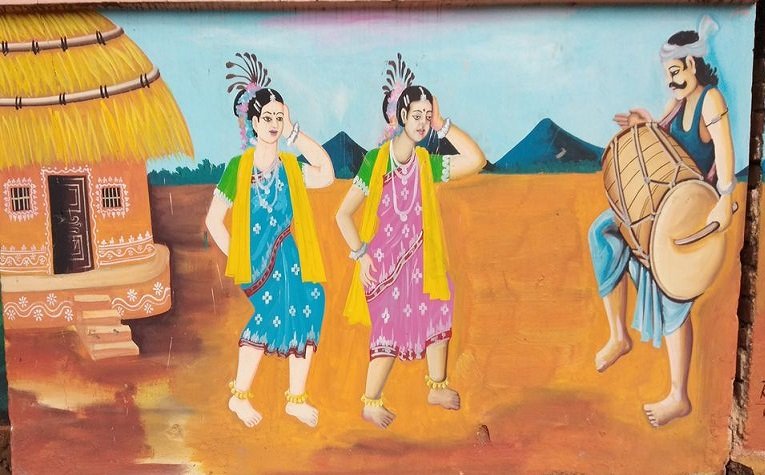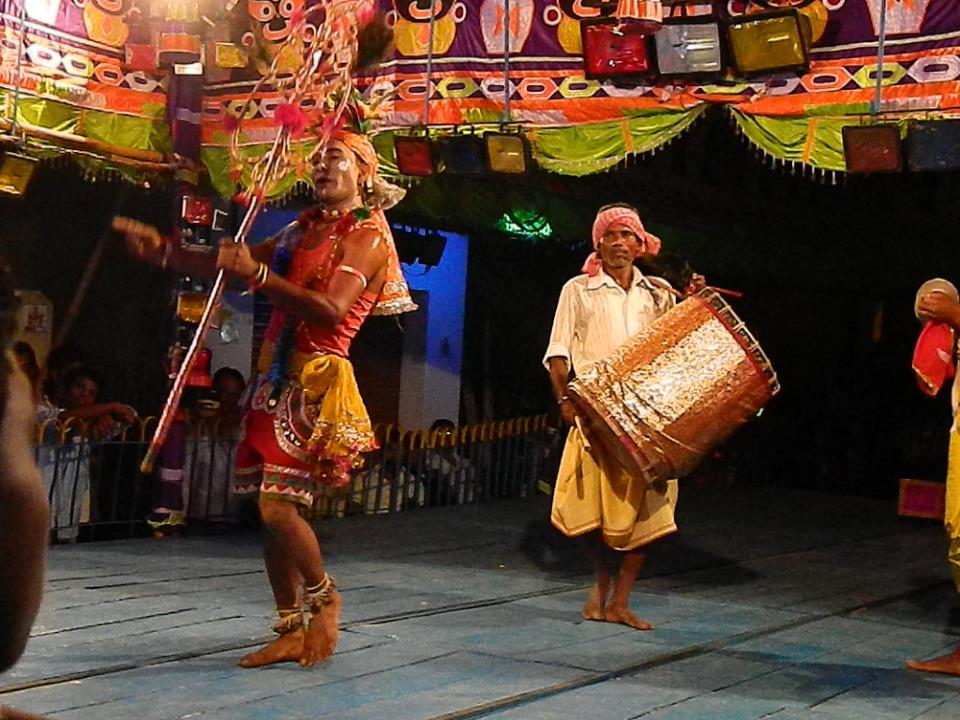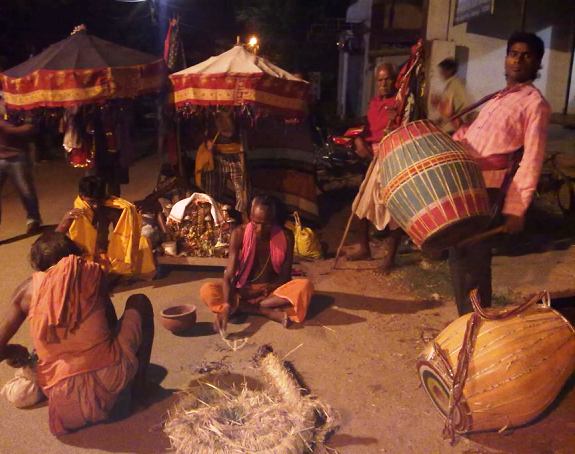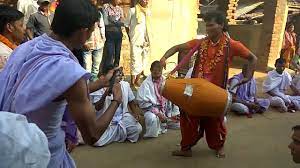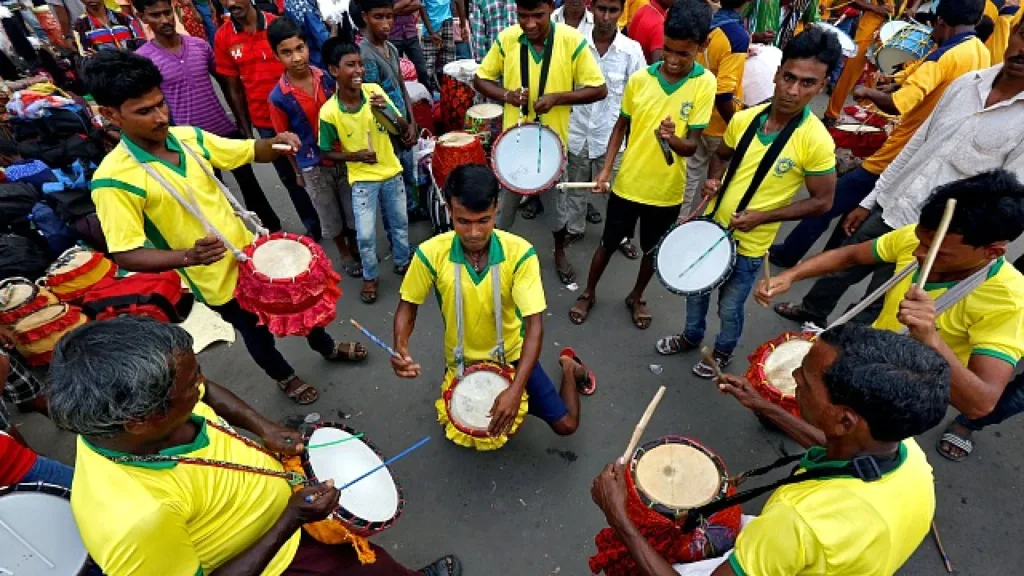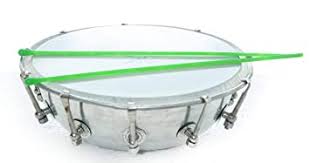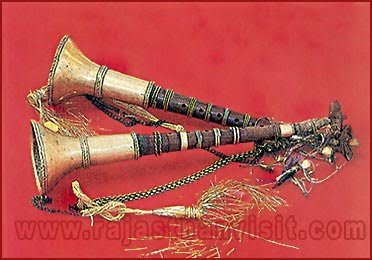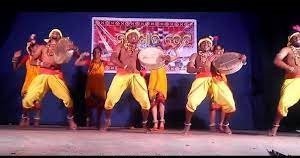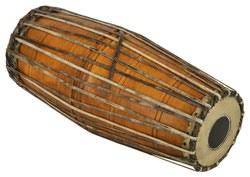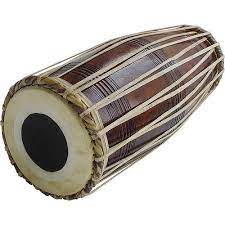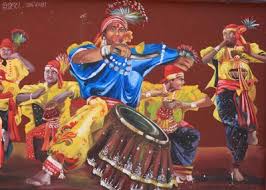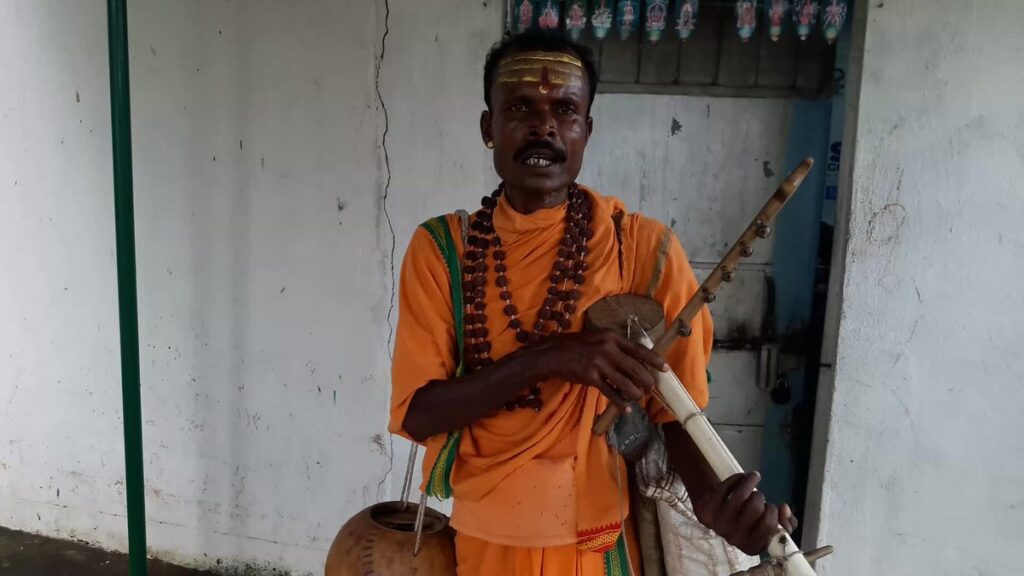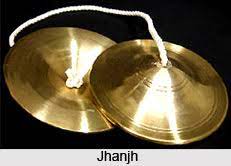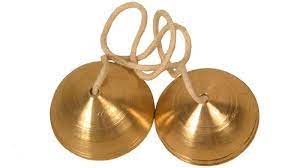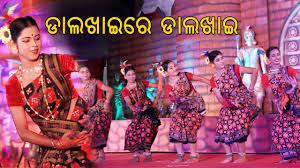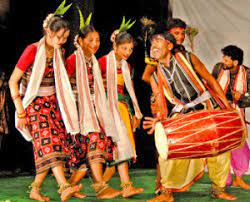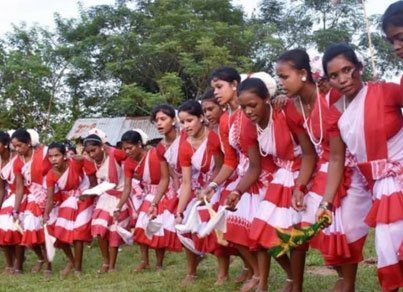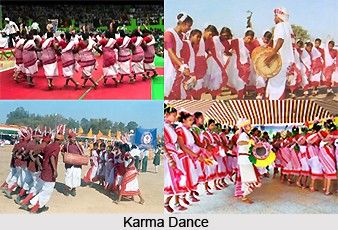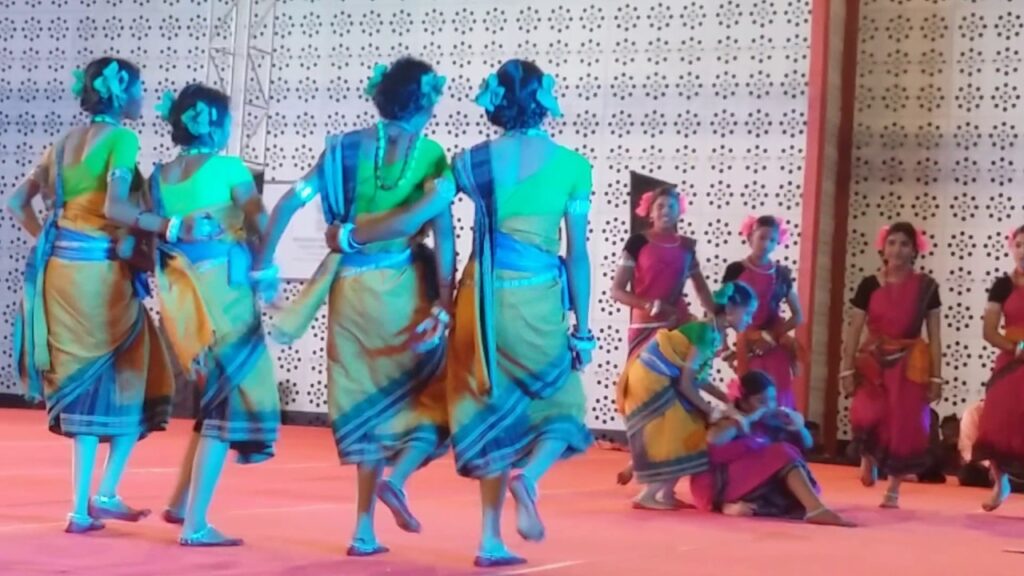Folk Music & Dance
Music
The acoustic instruments used in the folk music of Western Odisha enjoys a special status for their uniqueness. Moreover, these instruments are a must to create an irresistible sound that makes the Sambalpuri folk style unique. These instruments are “Dulduli(ଦୁଲଦୁଲି), Dhol, Nisan, Taasha, Jhanj and Muhuri”. In this musical extravaganza, Dhol is the lead rhythmic instrument, Nisan is the bass booster, Taasha is the treble booster, Jhanj is the percussion and Muhuri (like Shehnai) is the only leading ‘sur’ instrument.
It is seen that though the instrumentalists do not have knowledge of the theory, what they play are based on the recommended grammar of folk music of the area without any flaw. Besides, the rich folk have other instruments like Mandal, dhulak, pakhauj, dugi-tabla, mridanga, mardal, dhap, timkidi, Jodi-nagara, Ghanta, behela, khanjani, dhapli, bansi, Singh-Kahali, Bir-Kahali, ghulghula, ghunguru, kendraa, khadkhadi, ektara, ghumra, gini (cymbals), daskathia etc.
The folk instruments which are used only in the Sambalpur region are Dhol, Mandal, Nishan, Tasa, Pakhoj, Bansi, Bir-Kahali, Gini, Ektara, Muhuri, Ghulghula, Jhanj etc. They are widely used in temples during ‘aarti’
Dhol
‘It is an age-old musical instrument of Indian folk music. The ‘dhol’ of Sambalpur is slightly different in its making and use. It is made from the trunk of a tree. Both sides of ‘dhol’ are of the same size. It can be used for any type of Sambalpuri folk song
Dandua Dhol
“Dand” or “Danda Nacha” is a popular ancient Odia past time entertainment package based on the various stories between Sri Krishna and Radha. During the old times when plays and dramas were the only sources of entertainment, such acts like “Dand” , “Pala” were very popular among the masses. “Dandua Dhol” is a unique “Dhol” specially used in “Dand” plays.
Mandal
The Sambalpuri ‘mandal’ is different from that of all other parts of India. The ‘mandal’ is made out of fired clay and is like a cylinder. Mandal is a drum that is used in slower rhythms. Most of the dance songs are accomplished with the Mandal. This is a very sweet musical instrument and requires good skills to play. It is found in almost all households of ancient Odias (ଓଡିଆ). It is one of the main musical instruments for Kirtan during Ram Navami (ରାମ ନବମୀ). Besides, it is also used during ‘Jhumer’ and ‘Karma’ style songs. It is an essential part of ‘Karamasani’ Pooja.
Nishan
It is made out of iron sheets. The sound coming out from ‘Nishan‘ is heart throbbing. This is mostly used in the worship of kali or Durga and in the battlefield.
Tasha
It is a percussion instrument made out of wood, metal, brass, leather, cloth and parchment. It is used in Jammu and Kashmir and Northern India. It is played with two thin bamboo sticks. The sound of ‘Tasha’ creates an atmosphere of horror, fear and excitement..
Muhuri
This musical instrument is made out of wood, with a double reed at one end and a wooden flared bell at the other end. Its sound is thought to create and maintain a sense of auspiciousness and sanctity and, as a result, is widely used during marriages, processions and in temples. Muhuri is the only leading ‘sur’ instrument in Sambalpuri music.
Dhap
Dhap is percussion which is a single-faced and shallow rimmed drum. It is a tambourine with a wooden frame played using the flat of the palm and fingers.
Murdung
The mridangam/murdung is a percussion instrument of ancient origin. It is a terracotta, two-sided drum used in Wester Odisha for accompaniment with devotional music (Bhakti like Astaprahari, Kirtan, and Pala etc.). The drum is played with the palms and fingers of both hands
Ghumra
Ghumra is considered to be a warrior instrument that was being played in old times before a king was to proceed to war or after he won a war. “Ghumra Dance” is completely based on musical instruments and a very popular dance form of Kalahandi. The dancers used to hang the instruments at their chest and play it with both hands while dancing and it creates a unique scene.
kendara
The Kendra is a wooden string instrument, which has two parts and each part has a string. The bigger part remains constant while the smaller part runs against the bigger part to produce sounds. They are mostly played traditionally by Jogis (Saints). The folk songs played in a Kendara is known as ‘Kendara Gita’
Ghupkudu:This is a traditional folk instrument made up of Mango wood. The round part of it is covered with reptile skin and the thread is called ‘thaat’. The heart touching sound is known as ‘Ghubkudu Chaang Ghubkudu’. “Ghubkudu Naach” is a very popular song dance and nowadays it is called “Kismi Naach”.
khanjini
This musical instrument is mostly used by followers of the “Alekh” sect during their Bhajan and Kirtan. Alekh sect is similar to Jainism having similarities between them. The ‘Matha’ or religious place of the Alekh sect is called “Mahima Gaadi” where this instrument is worshipped.
Baensi
It is known as ‘Bansi’ in Western Odisha and in English, it is called flute(ବଂଶୀ). This instrument takes its inspiration from the eternal love between Lord Krishna and Radha. Lord Krishna used to play this instrument often while grazing cows but unfortunately Radha and other Gopis also attracted towards Krishna. And it is made up of bamboo.
Jhanj
It synchronizes the beats and rhythm in Sambalpuri Music and is considered an important background music for It synchronizes the beats and rhythm in Sambalpuri Music and is considered important background music for ‘Kirtans’ especially those performed during ‘Rath Yatra’ (ରଥ ଯାତ୍ରା)(Car Festival of Lord Jagannath).
Mitu Kathia: Mitu Kathia as its name suggests is a musical instrument having combinations of two words one is Mitu and another is Kathia. It is made out of Bamboo wood (Kathia) and is inspired by Mitu (Parrot). It somewhat makes a sound like a parrot. Also, it is popularly known as “Khidki Khicha” due to its unique style of playing. This instrument is used in “Udanda Kirtan” a particular form of Kirtan held during the Ram Navami or during the evening hours in villages.
Ramtali: Ramtali is mainly used during “Krushna-Guru” plays in Odia villages. Krushna-Guru(କୃଷ୍ଣ ଗୁରୁ) is a unique song and play performed by a group of people on various mythological topics especially about Krishna of Dvapara Yuga. Ramtali is the main instrument of saint “Narada”, who is considered as one of the greatest devotes of Lord Vishnu. A typical hymn he used to sing is “Narayana” while playing this instrument in one hand when he used to enter a place or interfere in a discussion.
Dance
Every culture has its unique style of the dance form and is performed in a festival or worship of a particular deity. And these colourful folk dances are enjoyed by not only the people of that community but also by all people who watch this dance form.
Sambalpuri Dance
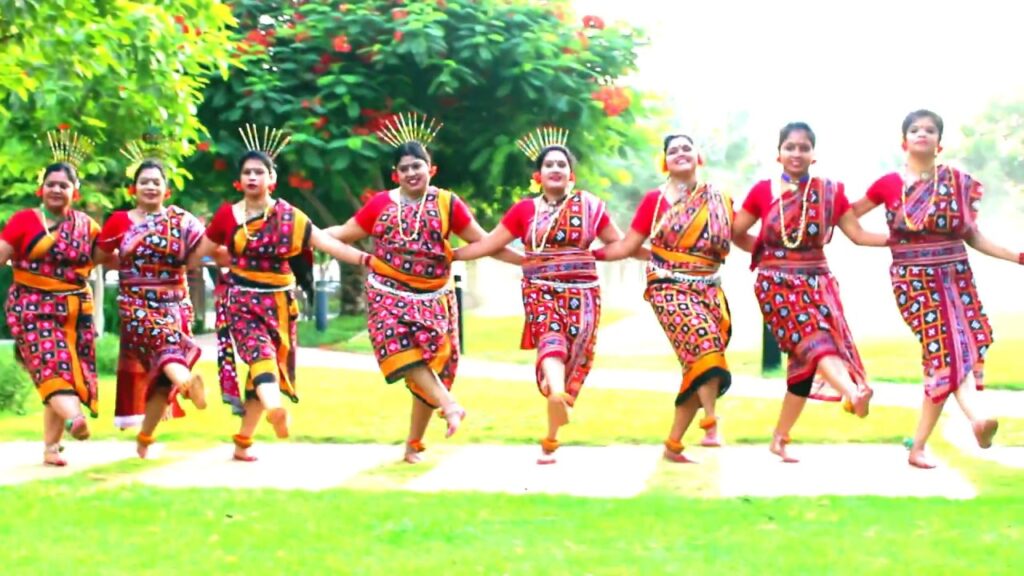
Dalkhai Dance
Dalkhai is a ritualistic folk dance. Songs sung on this occasion are known as Dalkhai songs. Young girls of Binjhals, Soura and Mirdha tribes perform this dance during Dusserah, Bhaijuntia and otherstive occasions. However, non-tribal people of the mainstream society also te in these ritual dances and songs, without hesitation, which is an indicator of the tribal and non-tribal interaction. And during a dance performance, the young girls follow a pattern of standing and that must be either a line or in a semi-circular pattern.
Karma Dance
Karma dance is the most colourful dance in the district. It is mainly a tribal dance in honour of “Karam-Sani”, the deity who grants children, as per their belief. Non-tribal people also participate in this ritual dance and songs. In the beginning, the dancers enter the dancing area in two rows with the drummers and the singers accompany them with rhythmic steps.
Humo & Bauli
These are two playful dances performed generally by young and unmarried girls, on special occasions, who sing and dance in groups. The stepping and movements of the dance are very slow. However, the old and aged women of the villages also participate in this dance to guide the young dancer.
Koisabadi Dance: This dance is popular among the Gond and the Bhuyan tribes. In this dance form, only male dancers take part, holding a two feet long stick. The songs are mainly based on the immortal love story of Radha and Krishna.


